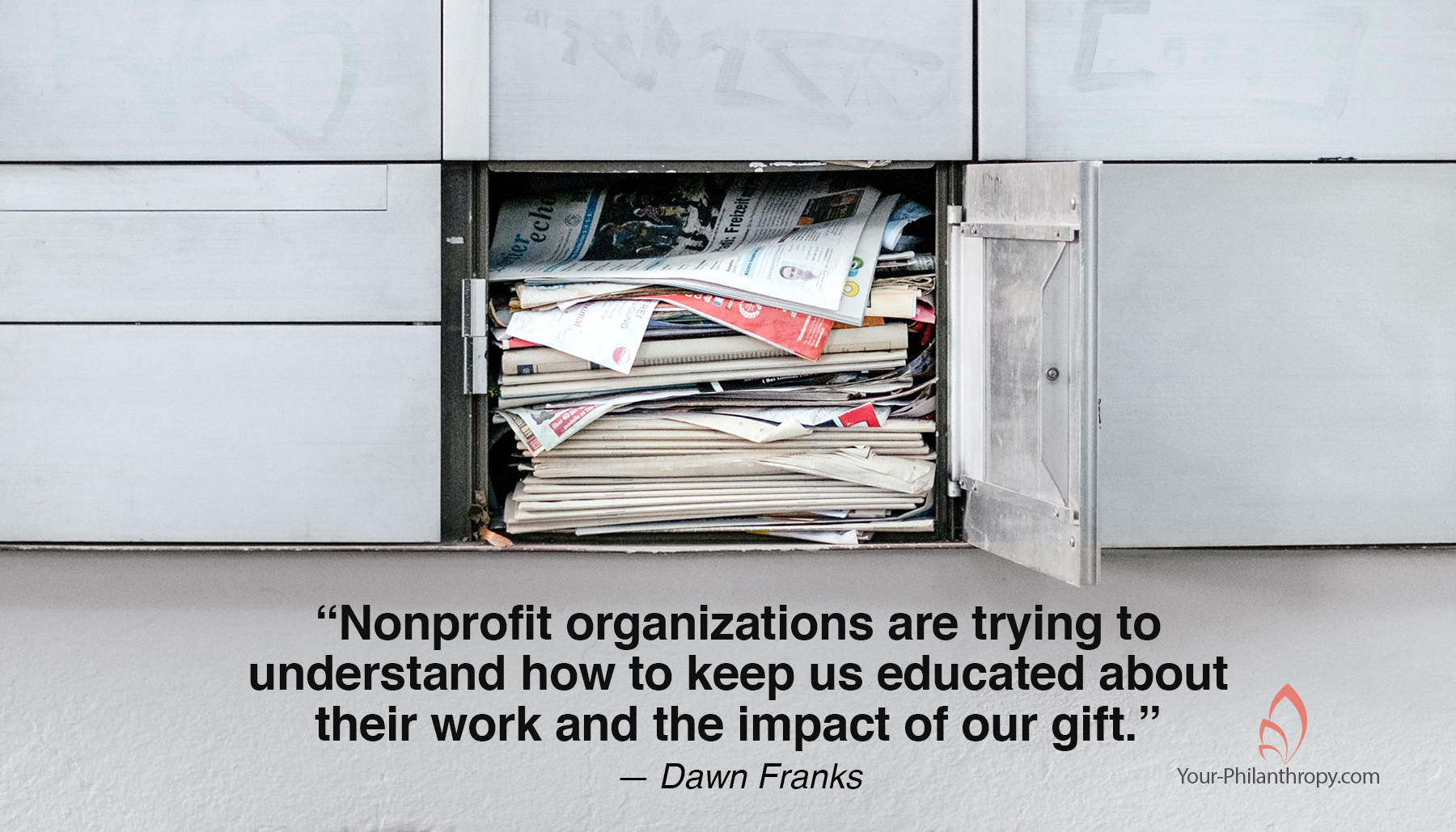Frankly, I’m stumped. A friend asked how to get nonprofit organizations to stop sending information, invites and fundraising letters. What makes this a complicated question, and what I explained to my friend, is that nonprofits learn a relationship with a donor takes more than one connection – more than one mailing, more than one e-mail or newsletter.
Nonprofits learn it takes at least seven connections to keep their organization high enough in your mind that you remember to donate. That translates to the better a nonprofit organization is at fundraising and development the more information you will receive from them. That’s even if you are an occasional donor, or your gift is small.
I frequently write about donating to organizations as a way to honor or remember a friend or loved one. I encourage you to give to organizations that are important to them, not to you.
The truth is that very action will get you on their contact lists.
You should always receive a thank you from organizations you support, regardless of the size of the gift. And you should receive a tax receipt suitable for your records if you use charitable donations as a write-off on your federal income tax return. That’s two of the seven contacts.
Add three newsletters, one fundraiser invitation, two letters requesting your support for the annual campaign. Now they’ve topped the seven contacts, and you’re either beginning to be more interested, or you’re just more irritated.
Back to the question that stumps me: what’s a donor to do? The mailbox and email are filling up with unwanted letters, invitations, announcements and on and on.
Four Solutions (most you won’t like)
- Call and ask the organization to take your address completely off their mailing and contact lists.
- Toss what you’re not interested in the wastebasket. Don’t spend time thinking about it.
- Make time to read what they are sending. Find out why others think it’s important work to support. Someone spent a lot of time planning and writing so that you could be informed about their work and the difference your donation makes.
- Collect the invitations, letters, and newsletters and share with your favorite nonprofit organization to use as research on what to do or not do on their donor materials, newsletters, and invitations.
Even if research had not told us it took seven contacts to engage a donor, we have to admit that it’s difficult to get our attention. We respond to visual cues from televisions to computer monitors and cell phones; we don’t read a third of what we did twenty years ago. An email with three paragraphs looks long, and a text with more than three lines is pushing our limits. We don’t spend nearly as much time in conversation on the phone.
Nonprofit organizations are trying to understand how to keep us educated about their work and the impact of our gift.
On many occasions a donor has said to me I don’t want them to spend their money on stuff I’m going to throw away and not read. Sometimes those statements are followed with what I want to know is how my donation is making an impact for those they serve.
And there you have it, the conundrum between the donor and the nonprofit organization. Now, I’m stumped on this question: what’s a nonprofit to do?
What do you think the solution is? Share your ideas on how to slow the unwanted mail, and be sure also to tell me how the nonprofit can best communicate with you, a valued donor.
Like it? Use it. Share it. Comment below.


Again, you have shone the light on both sides of the challenge. Thanks –